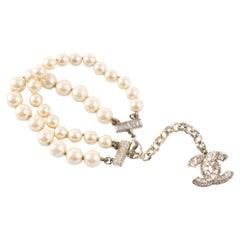Are you curious about the true value of a real ivory bracelet you own or have your eye on? Knowing how much it’s worth can be tricky, especially with so many factors at play.
This isn’t just about price—it’s about understanding the history, rarity, and legal aspects that affect its value. Keep reading, and you’ll discover what really makes a genuine ivory bracelet priceless—or surprisingly affordable. By the end, you’ll feel confident in knowing exactly what your bracelet could be worth.

Credit: www.reddit.com
Factors Influencing Ivory Bracelet Value
The value of a real ivory bracelet depends on several key factors. Each factor affects the price and desirability of the piece. Knowing these can help you understand what makes one bracelet worth more than another.
These factors include the type of ivory, the age and condition, the craftsmanship, and the bracelet’s history. Each plays an important role in determining the overall value.
Type Of Ivory
Ivory comes from different animals, such as elephants, mammoths, or walruses. Elephant ivory is often the most valuable and rare. Mammoth ivory is older and sometimes easier to buy legally. The type of ivory affects the price and legal status of the bracelet.
Age And Condition
Older ivory bracelets can be more valuable, especially if they are antiques. The condition matters a lot. Cracks, chips, or discoloration can lower the value. Well-preserved bracelets keep their worth over time.
Craftsmanship And Design
Hand-carved bracelets with detailed designs usually have higher value. Skilled craftsmanship shows in the fine lines and smooth finish. Unique or intricate patterns attract collectors and can raise prices.
Provenance And History
The bracelet’s origin and story can add to its value. Bracelets linked to famous makers or historical periods are prized. A clear history helps prove authenticity and increases trust in the piece.
Legal Considerations And Market Restrictions
Owning a real ivory bracelet involves more than just its appearance. Legal rules and market limits play a big role in its value. These laws protect elephants and other wildlife. They also control trade to stop illegal sales. Understanding these rules helps buyers and sellers act right.
International Laws And Bans
Many countries follow global rules on ivory trade. The Convention on International Trade in Endangered Species (CITES) stops most ivory sales. It bans buying and selling ivory across borders. Only certain old ivory pieces may be allowed. This law aims to save elephants from poaching.
Regional Regulations
Different places have their own rules about ivory. Some countries ban all ivory trade inside their borders. Others allow only antique ivory with proof of age. Some require permits for selling or buying ivory. These rules vary a lot and can be strict or lenient.
Impact On Pricing
Legal limits affect how much an ivory bracelet costs. If laws are strict, ivory becomes rare and expensive. Illegal ivory risks fines and loss of the item. Legal ivory often needs certificates, adding to the price. Buyers must check laws before trading ivory bracelets.
Methods To Authenticate Ivory Bracelets
Authenticating a real ivory bracelet requires careful examination and specific methods. Identifying genuine ivory helps determine its true value. Several ways exist to check if an ivory bracelet is authentic. Each method gives clues about its origin and quality.
Visual Inspection Techniques
Look closely at the bracelet’s surface for unique patterns. Real ivory shows fine lines called Schreger lines. These lines cross each other at angles, creating a distinct look. Fake ivory or plastic often lacks these patterns. Check the color too. Ivory is usually creamy white or pale yellow. Uneven color or smooth texture may signal imitation.
Scientific Testing Options
Scientific tests offer more accurate results than visual checks. One common method is UV light examination. Real ivory glows slightly under ultraviolet light. Another test involves hot needle or heat. Genuine ivory does not melt or smell like plastic when heated. Chemical analysis can also reveal ivory’s composition. These tests often require special equipment and trained personnel.
Expert Appraisal
Professional appraisers have experience spotting real ivory. They use various tools and knowledge to verify authenticity. Experts can also estimate the bracelet’s age and origin. Their opinion adds trust and value to your piece. Always seek an appraiser certified in ivory identification. This step is crucial for high-value items.

Credit: www.reddit.com
Current Market Trends
The value of a real ivory bracelet changes with market trends. These trends reflect how many people want ivory and how much ivory is available. Prices do not stay the same for long. They rise and fall based on many factors. Understanding these trends helps collectors and buyers know what to expect.
Demand And Supply Dynamics
Demand for ivory bracelets is limited by strict laws. Supply is very low because hunting elephants is illegal. Old ivory pieces become rare and more valuable. Few people can sell real ivory today. This scarcity makes prices higher for genuine bracelets.
Impact Of Ethical Concerns
People worry about animal protection. Many avoid buying ivory due to ethical reasons. This lowers demand in some markets. Some buyers choose alternatives like bone or synthetic ivory. Ethical concerns have made real ivory less popular overall.
Popular Styles And Collectibles
Bracelets with unique designs or historical value sell for more. Antique ivory bracelets attract collectors. Simple modern designs are usually less expensive. Carvings with cultural importance also increase worth. Styles affect price alongside material authenticity.
Estimating The Value Of Your Ivory Bracelet
Estimating the value of your real ivory bracelet takes some careful steps. The worth depends on many factors like age, condition, and design. Knowing the value helps in sales or insurance. Use clear methods to get a fair price estimate.
Using Online Valuation Tools
Online tools offer quick value estimates for ivory bracelets. Enter details such as size, weight, and style. These tools compare similar items to suggest a price range. Results may vary, so treat them as rough guides. Always check multiple sources for better accuracy.
Consulting With Dealers And Collectors
Dealers and collectors know the ivory market well. They examine your bracelet’s craftsmanship and rarity. Experts give a more precise value based on current demand. Visit local antique shops or jewelry experts for advice. Their experience helps you avoid low or inflated prices.
Auction Results And Price Guides
Auction houses publish past sale prices of ivory bracelets. These prices show real market trends over time. Price guides list typical values for different ivory types and styles. Check recent auction results to see what similar bracelets sold for. Use this data to set a realistic price expectation.

Credit: www.reddit.com
Alternatives To Real Ivory Bracelets
Real ivory bracelets are rare and expensive. Many people want the look of ivory without the high cost or ethical issues. Alternatives to real ivory bracelets offer beautiful and affordable options. These choices also help protect elephants and other animals. Here are two popular alternatives to consider.
Imitation Materials
Imitation ivory materials copy the look of real ivory closely. Resin and bone are common choices. Resin is lightweight and can be carved easily. Bone has a natural texture and is often polished smooth. Both materials are much cheaper than real ivory. They also avoid legal problems linked to ivory trade. Imitation bracelets can look stylish and last long.
Ethical Jewelry Options
Ethical jewelry uses materials that do not harm animals. Wood, recycled metals, and glass are popular. These bracelets come in many designs and colors. Artisans craft them with care and skill. Ethical options support fair trade and sustainable practices. Wearing these pieces shows respect for nature and culture. They offer a unique style without guilt.
Frequently Asked Questions
How Much Is A Real Ivory Bracelet Worth Today?
The value of a real ivory bracelet varies widely. Factors include age, craftsmanship, condition, and market demand. Prices can range from $100 to several thousand dollars. Legal restrictions also impact its sale and value globally.
What Affects The Price Of An Ivory Bracelet?
Price depends on ivory type, age, condition, and artistic detail. Antique or rare pieces fetch higher prices. Market trends and legal regulations also influence value and resale potential.
Is It Legal To Sell Real Ivory Bracelets?
Selling real ivory depends on country laws. Many countries restrict ivory trade to protect elephants. Always check local regulations before buying or selling ivory items to avoid legal issues.
How To Identify A Genuine Ivory Bracelet?
Genuine ivory has a distinct grain pattern called Schreger lines. It feels smooth and warm compared to plastic. Professional appraisal or testing ensures authenticity and accurate valuation.
Conclusion
Real ivory bracelets hold value based on age, condition, and rarity. Genuine pieces often cost more than imitations. Buyers should check authenticity carefully to avoid scams. Laws about ivory trade vary by location and affect prices. Knowing these facts helps make smart buying choices.
Always research before purchasing to protect your investment. This knowledge keeps you safe and informed.

Madison Clark is a footwear expert and the voice behind MyStyleGrid.com. She specializes in honest shoe reviews, style tips, and practical guides to help readers find the perfect pair for any occasion. With years of experience in blogging and content creation, Madison makes footwear knowledge simple, stylish, and easy to follow.






